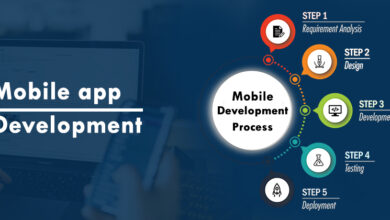Navigating the Realm of iOS App Development on Windows: Challenges and Solutions

In the expansive landscape of mobile app development, iOS holds a prominent position, catering to a vast user base with its sleek interface and user-friendly experience. However, developing iOS applications traditionally requires a macOS environment, leaving many developers pondering the feasibility of iOS app development on Windows. In this article, we will explore the challenges associated with iOS app development on Windows and delve into the solutions available for developers aiming to create cutting-edge applications for Apple’s ecosystem.
The Apple Ecosystem and iOS Development:
Before diving into the intricacies of iOS app development on Windows, it’s crucial to understand the unique ecosystem Apple has cultivated. Apple’s Integrated Development Environment (IDE), Xcode, is the primary tool for iOS app development. Xcode provides a comprehensive suite of tools, including a code editor, debugger, Interface Builder, and simulator, all encapsulated within a macOS environment.
For developers accustomed to working in Windows, the exclusivity of Xcode to macOS presents a formidable barrier. However, as the demand for iOS applications continues to surge, developers seek ways to overcome this limitation and explore the possibility of iOS app development on Windows.
Challenges of iOS App Development on Windows:
1. Xcode Exclusivity to macOS:
The foremost challenge in developing iOS apps on Windows is the exclusive integration of Xcode with the macOS operating system. Xcode is the official and indispensable IDE for iOS development, making it challenging for developers to access its features without a Mac.
2. Simulator Limitations:
The iOS simulator, an essential component for testing applications during development, is an integral part of Xcode. Developers on Windows face challenges in efficiently testing and debugging their applications due to the absence of native support for the iOS simulator.
3. Build and Compilation Issues:
iOS mobile applications require compilation and building using Apple’s proprietary tools, which are optimized for macOS. Attempting to compile iOS apps on Windows may result in compatibility issues, leading to suboptimal performance and potential errors.
Solutions for iOS App Development on Windows:
1. Virtual Machines and Hackintosh:
A common workaround for developing iOS apps on Windows involves setting up a virtual machine running macOS. This can be achieved using virtualization software such as VMware or VirtualBox. Additionally, some developers explore creating a Hackintosh – a non-Apple computer that runs macOS – to access the Xcode environment.
While these solutions provide a pathway to Xcode, they come with legal and technical challenges. Running macOS on non-Apple hardware may violate Apple’s terms of service, and the performance of virtual machines may not match that of native hardware.
2. Cloud-Based Mac Services:
Another viable option is leveraging cloud-based macOS services. Several platforms offer remote access to Mac machines, allowing developers to run Xcode on a macOS environment without the need for physical hardware. This approach eliminates the need for a Hackintosh and provides a legal and efficient solution.
However, reliance on cloud-based services introduces latency, which can impact the development workflow, particularly when dealing with resource-intensive tasks such as compilation and testing.
3. Cross-Platform Development Tools:
Developers exploring iOS app development on Windows often turn to cross-platform development tools. These tools enable the creation of applications that can run on multiple platforms, including iOS, without requiring platform-specific development environments.
Popular cross-platform frameworks, such as Xamarin, Flutter, and React Native, allow developers to write code once and deploy it on iOS and Android. While these frameworks offer convenience, they may not provide the same level of optimization and native performance as applications developed exclusively for iOS.
4. Remote Mac Build Agents:
Some development tools, like Visual Studio with Xamarin, allow developers to set up remote Mac build agents. In this scenario, the actual compilation of the iOS app occurs on a macOS machine, while the Windows environment is used for coding and debugging. This approach combines the convenience of Windows development with the compilation capabilities of a macOS system.
However, setting up and maintaining a remote build environment requires additional configuration and may introduce complexities in the development workflow.
Conclusion:
iOS app development on Windows remains a challenge, primarily due to Apple’s commitment to a closed ecosystem and the exclusive integration of Xcode with macOS. Developers seeking to venture into iOS development from a Windows environment must carefully evaluate their options and choose an approach that aligns with legal, technical, and workflow considerations.
While solutions such as virtual machines, cloud-based services, and cross-platform frameworks offer pathways to iOS development on Windows, each comes with its own set of advantages and limitations. As the landscape of mobile app development continues to evolve, developers may find innovative ways to bridge the gap between Windows and iOS, enabling a broader community to contribute to the vibrant world of iOS applications.




